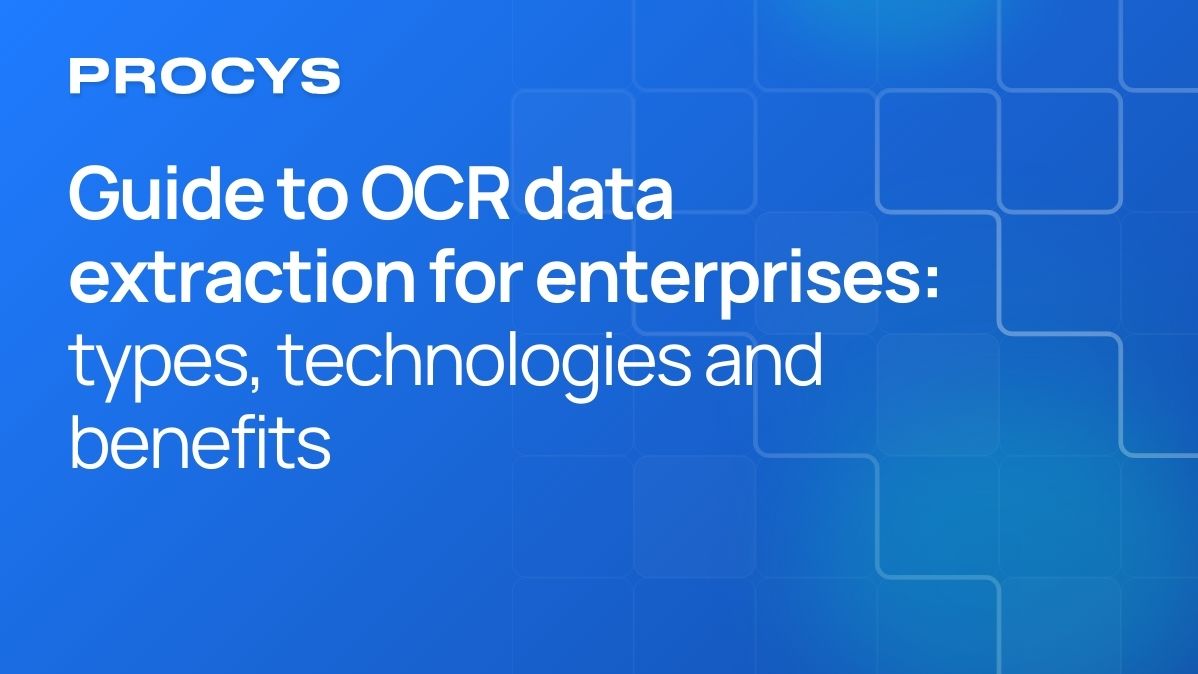Machine learning (ML) is revolutionizing document automation, making data processing faster, smarter, and more efficient. But how does it really work, and what impact can it have on businesses?
To find out more, we’re sitting down with Roman Tokmashev, ML Team Lead at Procys.
Why should businesses be turning to machine learning and self-learning tools to help with their documents?
In a nutshell, it’s all about automating routine work. Traditionally, document processing was a manual task requiring a professional to extract data from documents and enter it into bookkeeping software. However, machine learning technologies can train a virtual accountant to handle most of these routine procedures independently. With such a helper, processing becomes faster, allowing businesses to focus on more strategic and creative tasks.
Can you help us differentiate between machine learning and self-learning from a Procys perspective - do these work side by side? With Procys, does a customer get both?
Regarding self-learning, we’re talking about our machine learning engine, which is trained on new annotated data regularly. Specifically, the engine runs its learning routine every night to adapt to the annotations made throughout the day. These annotations are generated by customers who process documents through our engine and correct the extracted data, if necessary, before sending it to the bookkeeping software. So yes, customers benefit from both.
Can you give us a very short overview about what an invoice processing self-learning engine actually is?
It revolves around two key components: extraction and training.
The extraction component is a pipeline with three stages:
- Converting an incoming file into rich text, including text with coordinates.
- Selecting candidates for each field to be extracted.
- Scoring each candidate using an ML model and selecting the top candidates for output.
The training component works as follows:
- Receiving the correct textual values from the user.
- Associating the correct text values with the candidates in the document.
- Training the engine on the correct candidates to improve candidate scoring.
What would you say are the key advantages of our self-learning invoice processing engine?
In terms of our self-learning invoice processing engine, I would highlight the following:
- Daily learning based on your data.
- No need to select bounding boxes or create templates for training.
- Fast processing time - less than 30 seconds per page.
With growing concerns about AI and data privacy, what measures does Procys have in place to ensure that our customers’ data remains secure while using artificial intelligence?
We take data security very seriously and adhere to industry-leading standards to ensure the safety of our customers' data. One of the key frameworks we follow is ISO 27001, which is a globally recognized standard for information security management. This ensures that we have robust processes in place to manage and protect sensitive data throughout its lifecycle.
Conclusion
In today’s fast-paced world, businesses struggle with slow data extraction, repetitive tasks, and disorganized systems. These inefficiencies waste time and hinder growth. That's why we created an AI-driven document processing platform. And, as Roman outlined during our conversation, Procys’ self-learning invoice engine reduces manual work, minimizes errors, and optimizes workflows. With fast processing and ISO27001-compliant security, our platform helps businesses stay competitive and drive success through intelligent automation.
See the difference for yourself - sign up for free today and experience effortless document automation with Procys. And you can process your first 50 documents on us!

.jpg)


.png)
